Muscular System

Hey, guys! Welcome to this Mometrix video about the muscular system.
Muscles aren’t just those things you make when you flex your arms. Muscles go much deeper than that.
Muscles control movement. They help us with our posture. They control a number of voluntary and involuntary movements in our body.
The human body contains roughly 700 muscles that make up half of our body weight. That’s a lot of muscle. So, let’s take a look at the muscular system and the critical roles it plays in our body.
What is the muscular system?
We have muscles from head to toe. We have muscles in our head and neck, chest and upper back, abdomen and lower back, arms and hands, and legs and feet. They all have muscle, an elastic tissue that controls our movement. The muscular system consists of skeletal, smooth, and cardiac muscles. Let’s start with the skeletal muscles.
Skeletal Muscles
We bend. We lift. We twist and we turn. We can thank the skeletal muscles for that. These muscles, which are the majority of muscle tissue in our body, power our skeletal movement. When you think of movement, you might think of walking or stopping. But skeletal muscles do so much more than that. These muscles help with our posture by holding us upright.
Muscles also keep our skeleton stable. These muscles hold joints in place, so they don’t become dislocated. They also play a crucial role in a number of voluntary movements, like swallowing, that are important to other parts of our body. These voluntary movements result in a push and pull or relax and contract state. Lifting your legs or bending your arm are examples of voluntary movements.
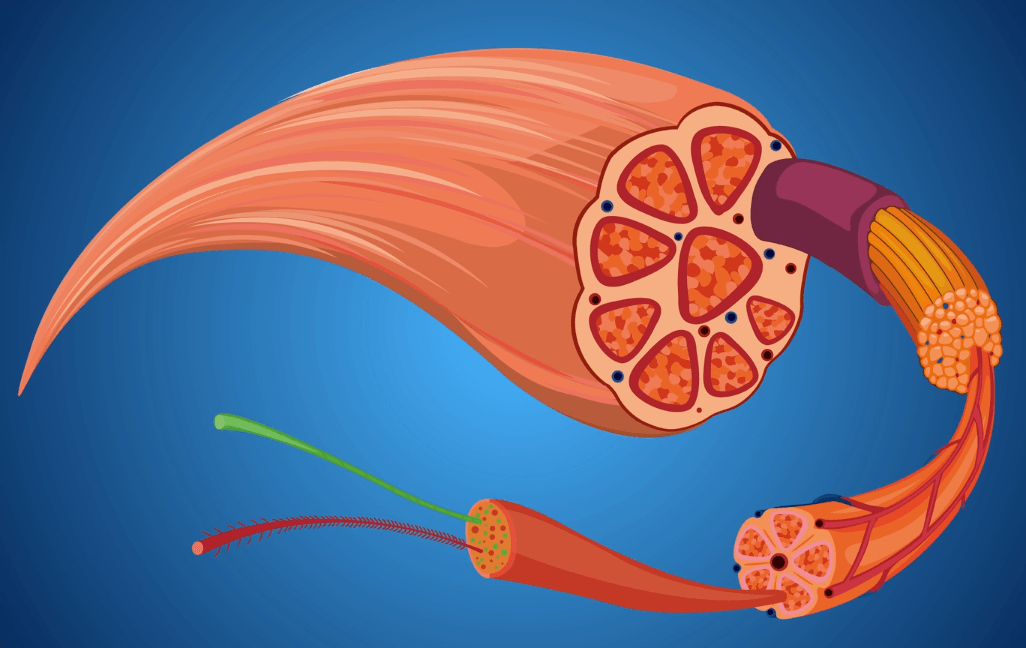
Since skeletal muscles have their own integrated tissues, they’re actually organs. The tissues, made of microfibers, look as if they have a series of ridges, which makes the muscles striated. Biceps and triceps are examples of striated muscles.
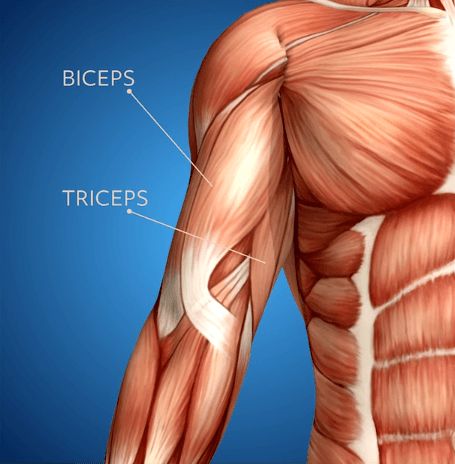
There are two types of skeletal muscles, slow-twitch, and fast-twitch.
Slow-Twitch Muscles
Slow-twitch muscles don’t easily tire so they’re best for endurance activities. If you’re going on a long walk or bike, those slow twitch muscles kick in.
Fast-Twitch Muscles
When you think of a burst of energy, think of a fast-twitch muscle. Since these muscles quickly contract, they’re best used for rapid movements, like if you’re trying to sprint. But the fast-twitch muscles do easily tire.
Cardiac Muscle
While other types of muscles get to rest, the heart muscle doesn’t. It beats every moment of every day for your entire life, pushing blood out of your heart and then relaxing to fill it. Unlike the skeletal muscle, the cardiac muscle is controlled by involuntary movements.
Smooth Muscle
The smooth muscle doesn’t have the same striation that the skeletal muscle or cardiac muscles have. That’s why these muscles are called smooth. You’ll find these muscles in the walls of hollow organs, acting involuntarily in a number of the body’s activities.
Smooth muscles, for example, contract to push food through the intestines and urine through the bladder. Smooth muscles in the uterus help in the birthing process during contractions. You’ll find smooth muscles around the respiratory, digestive, and reproductive tracts. The stomach and lungs are two more examples of smooth muscles.
Myosin and Actin
Muscle contains two major proteins called myosin and actin.
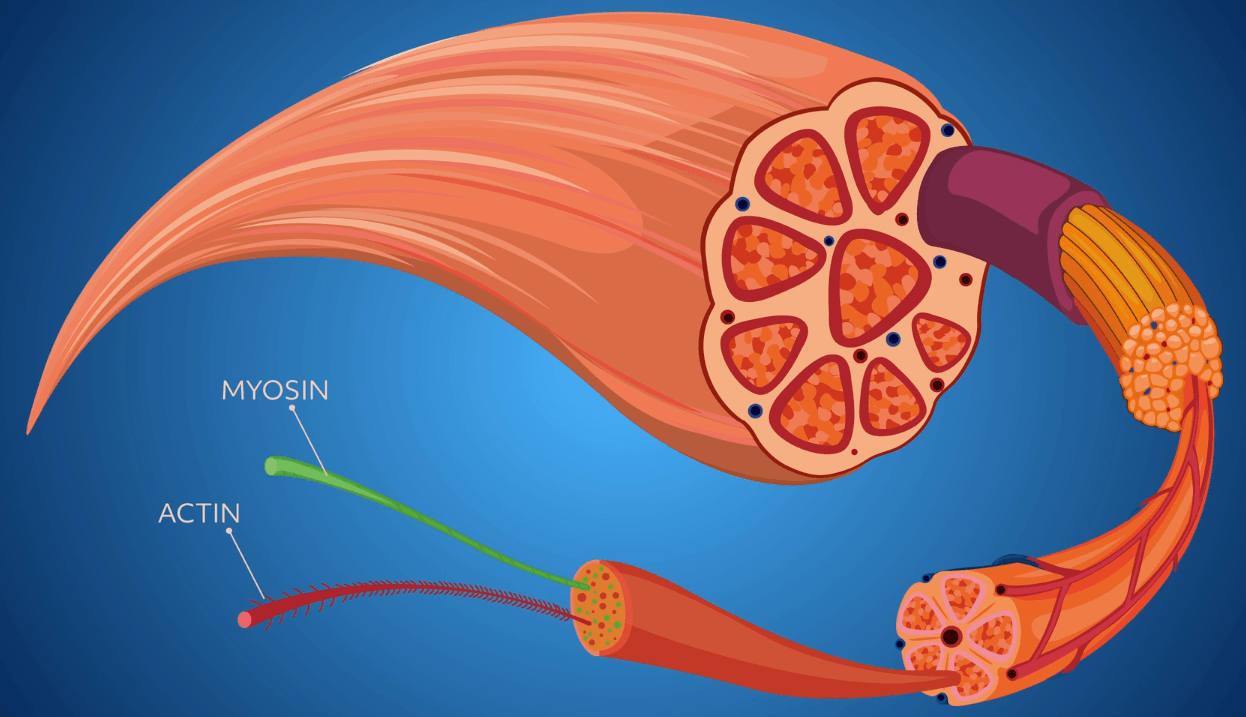
Myosin
Myosin is a thick filament that contains chemical energy that controls a specific movement and plays an important role in muscle contraction. Myosin controls all of the movements you make. If you’re reaching for the remote control, beating an egg in a dish, or turning the pages of a book, that’s myosin at work. Myosin works as the power plant for voluntary or involuntary movements by transferring energy.
Actin
Myosin works with actin, a protein in the thin filament that also plays a role in motion. So how do they work together? When the muscles contract, the thick myosin filaments grabs onto the thin actin filament. Sarcomere is the name of the myofibril unit that contains myosin and actin.
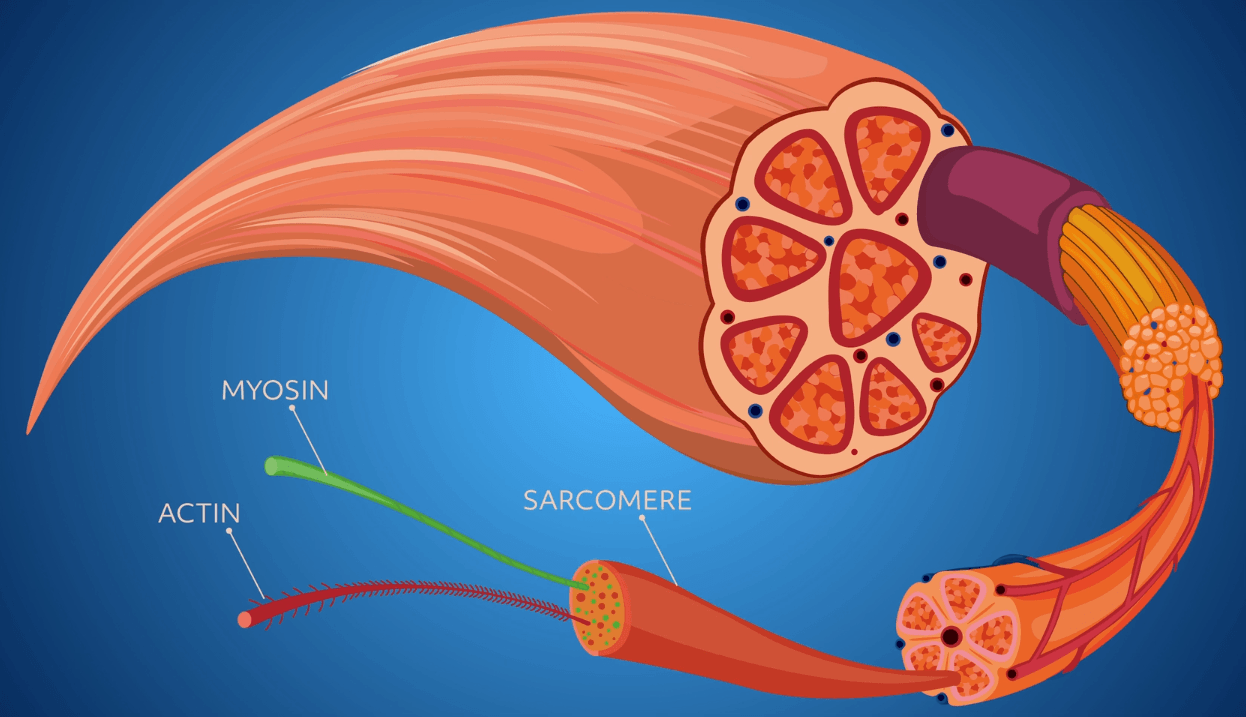
We’ve mentioned that muscle performs a number of important functions. Let’s take a closer look at what they are.
Head and Neck Muscles
When you move your head side to side or up and down, those are the head and neck muscles at work. Not only that, the muscles in our jaw control chewing. Muscles in our neck even help us swallow. Muscles in our face help us smile. Face muscles are also unique because most of them connect bones to skin. In other parts of the body, muscles generally connect to and move bone.
Chest and Upper Back Muscles
There are a number of important chest muscles, but none is more important than the pectoralis major. It helps the shoulder joint move in different directions, giving us the ability to raise our arm or shoot a basketball. The pectoralis major serves an even more important function because these muscles keep our arms attached to our body.

Here’s an easy way to think about the muscles in the chest and upper back. These muscles pretty much control our ability to rotate, whether it’s our head, neck, or trunk. We also wouldn’t be able to hold our head up without the support of these muscles.
Abdomen and Lower Back Muscles
The muscles of the abdomen protect vital organs, like the liver, kidneys, and gallbladder. But these muscles also help the body bend at the waist. This area contains three major muscles. Anyone who has six-pack abs is looking at their rectus abdominis, which is located at the front of the body. The rectus abdominis is that layer of muscle underneath fat. When the fat burns away, you’ll see the ridges along your abdomen, or, as they’re commonly called, abs. The external obliques, located on each side of your body, help our body rotate.
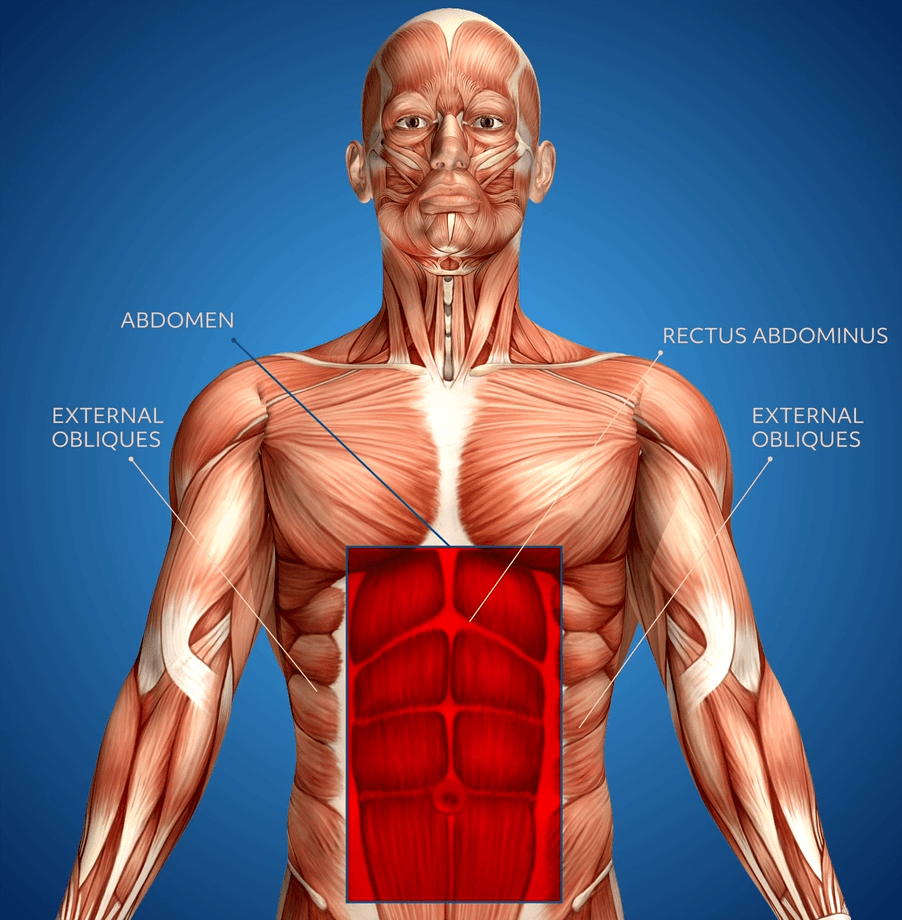
Lastly, the latissimus dorsi muscle, located in the middle of the back, plays a critical role in extending and rotating the arm.
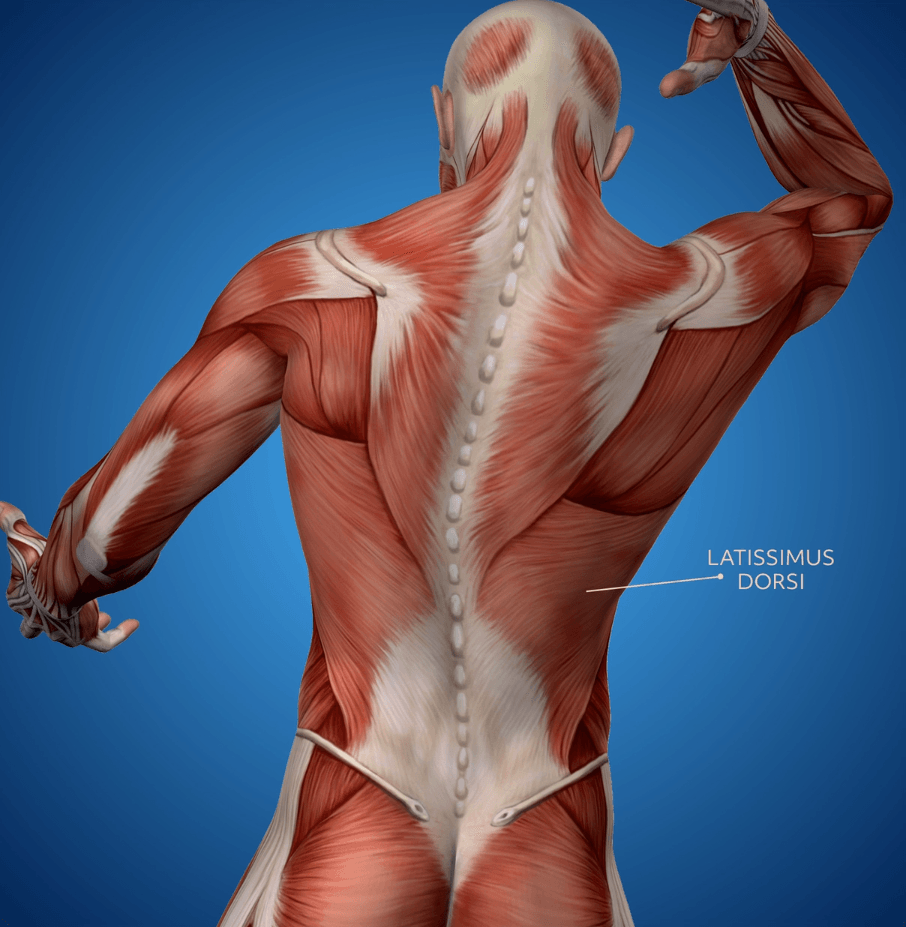
Arm and Hand Muscles
We all know the importance of our arms and hands. The muscles here help us do everything from typing to writing to painting. The muscles help with the strength and the ability to lift a frying pan, engage in physical activity, and squeeze. Three muscles—the brachialis, biceps brachii, and the brachioradialis—work together so that we can flex and extend our upper arms. The wrist, hands, and fingers, by in large, don’t move muscles on their own. Forearm muscles, like the flexor carpi radialis and flexor digitorum superficialis, control the flexing movement. These flexor muscles control the ability for the joint to bend.
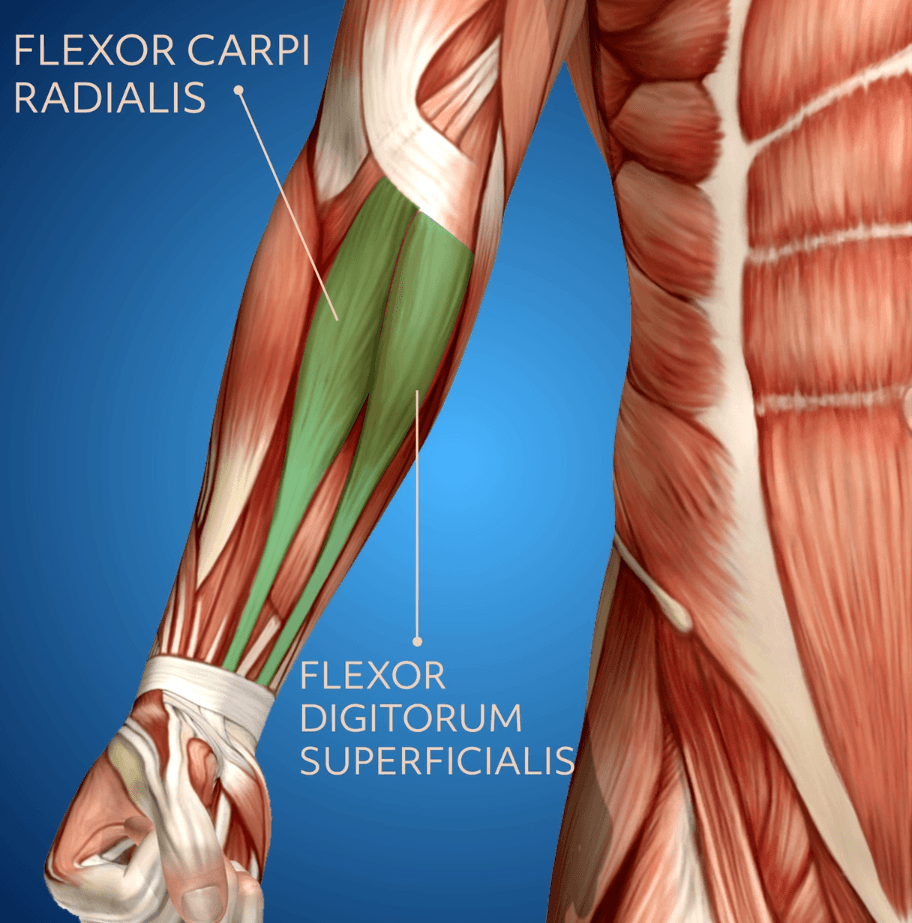
Other muscles, called extensors, control the ability to open the joint.
Leg and Foot Muscles
If you want to run or jump or just maintain your balance, you need the muscle in your legs and feet. Think of all the movement centered in this region of the body. The muscles stretch, contract, relax, and stabilize rotate joints. These leg muscles are called long muscles because they stretch.
The quadriceps, located in the front of the thigh, are the leanest and strongest muscles in the body. The hamstrings are on the back of the thigh, and anyone who has ever pulled a hammy knows exactly how painful that is. Calf muscles connect to the heel, making it a pivotal part of moving the foot, ankle, and knee.
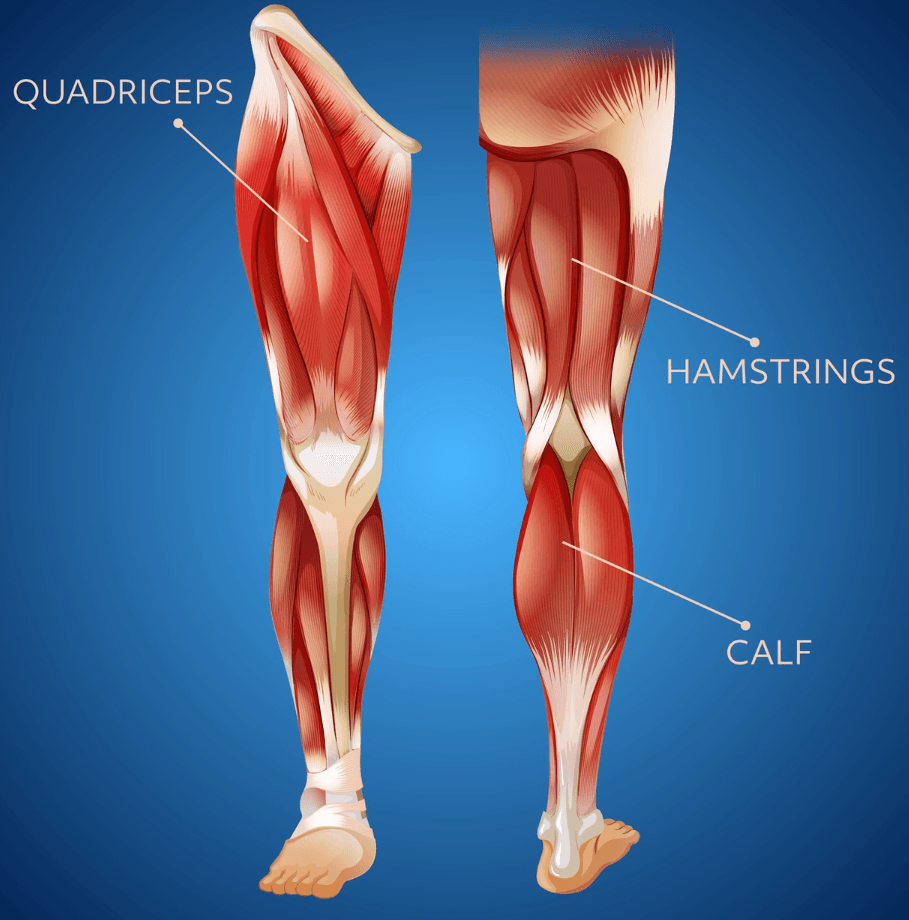
So that’s our overview of the muscular system, the system that gives us flexibility and provides the structure for movement and strength. I hope that this overview was helpful for you!
See you guys next time!
- Taylor, Tim. 2020. “Muscular System – Muscles of the Human Body.” InnerBody
- “Muscular System Anatomy, Diagram & Function | Healthline.” Healthline. 2018
- “PDB101: Molecule of the Month: Myosin.” n.d.
- “External Oblique.” 2014. Healthline
- “Chest Muscles Anatomy, Diagram & Function | Body Maps.” 2018. Healthline